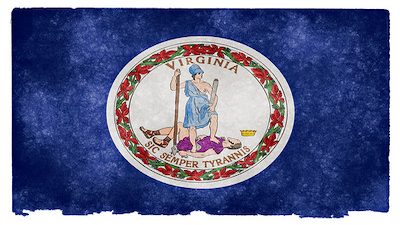In a recent episode of Where the Dogwood Blooms podcast, host Cassie Clark interviewed Joshua D. Glawson, a writer with expertise in politics, philosophy, economics, and precious metals.
Glawson, the Strategic Communication Adviser for the Libertarian Party of NC and Content Manager for Money Metals Exchange, offered an in-depth look at NC’s pivotal role in America’s gold history during the Carolina Gold Rush.
The Start of America’s Gold Rush: Conrad Reed’s Discovery
It all began in 1799 when Conrad Reed, a 12-year-old boy, stumbled upon a shiny 17-pound rock in a creek near his family’s farm in Cabarrus County, N.C. Unbeknownst to the Reeds, the rock was solid gold, and for years, it served as a doorstop. Eventually, the nugget was sold for $3.50—a fraction of its estimated $4,000 worth at the time.
This discovery, at the location now known as the Reed Gold Mine, marks the beginning of The North Carolina Gold Rush, preceding even the famous California Gold Rush. The gold of NC was now on the map, drawing attention from settlers and prospectors alike.
Reflecting on this monumental discovery, Glawson stated, “Not only was it North Carolina, but this was the first gold rush in North America. This is what actually inspired the gold rush in California years later.”
Peter’s Nugget and the Gold Boom
In 1803, another significant find occurred when Peter, an enslaved man working for Reverend James Love, uncovered a 28-pound gold nugget in Little Meadow Creek. Valued at $8,700 back then (over $1 million today), Peter’s discovery underscored the rich potential of the gold of NC. Despite not being able to keep the nugget, his find remains one of the largest east of the Mississippi River.
“This 28-pound nugget,” Glawson shared, “was worth about $8,700 back then, but today it would exceed a million dollars. Sadly, Peter did not get to keep that gold nugget.” The story of Peter and his discovery continues to captivate historians and treasure seekers alike.
The rush to NC grew as more gold was discovered, and by the early 1800s, settlers, particularly German immigrants, were flocking to the area. These findings not only sparked a localized economic boom but also set the stage for larger gold rushes in other parts of the United States. The Carolina Gold Rush played a crucial role in drawing attention to the untapped wealth in the region.
The Impact of Gold on N.C.’s Economy
By the 1830s, the gold of NC was a significant economic driver, and the local economy thrived on the influx of settlers and businesses tied to mining. At the time, transporting gold to the U.S. Mint in Pennsylvania for coining was difficult and dangerous, given the poor road conditions and the threat of robbery. To address this, a German immigrant family, the Bechtlers, set up a private mint near Charlotte, coining gold and even creating the first gold dollar in the U.S.
“The Bechtler family took the entrepreneurial decision to mint gold here in North Carolina,” Glawson said, “and they created the first dollar gold coin in the U.S., which really helped the local economy.”
The Bechtler Mint’s success eventually led the U.S. government to establish the Charlotte Mint in 1837. This marked a turning point for N.C., as the state became a hub for gold production, minting the majority of the nation’s gold coins through the mid-1800s. The North Carolina Gold Rush established the state as an important player in gold mining history, with Charlotte’s role in this era a precursor to its current status as a financial powerhouse in the United States.
The Decline of Gold Mining During the Civil War
The gold of NC experienced a significant decline during the Civil War, as many of the mines were shut down or abandoned. Some believe that gold was hidden away during this time, and rumors of hidden Confederate gold persist to this day. The Charlotte Mint, a symbol of N.C.’s gold boom, was repurposed by the Confederacy, but its operations ceased entirely by 1861.
Despite the decline in mining, the legacy of The North Carolina Gold Rush remains strong. Today, some enthusiasts still pan for gold in the state’s rivers and creeks, and areas like Cabarrus County and Gold Hill hold historical significance as former mining hotspots. “There’s still gold in North Carolina,” Glawson remarked, “and people can still find it in creeks and rivers today by panning.”
The Long-Term Economic Impact
N.C.’s early dominance in gold mining left a lasting impact on its economy and infrastructure. The influx of wealth from gold mining helped build towns and cities, created jobs, and laid the groundwork for Charlotte’s rise as a banking center. Even though the gold rush moved westward, the gold of NC’s reputation as a state rich in natural resources persisted.
Glawson highlighted the enduring importance of gold and sound money principles, noting how investing in gold and silver can serve as a hedge against inflation and preserve wealth over time. He emphasized that understanding the state’s history with gold, particularly The Carolina Gold Rush, can offer insights into economic strategies for today.
Gold Today: Is There Still Gold in NC?

While large-scale mining operations no longer dominate N.C., there is still gold to be found. Glawson explained that the state has remaining gold deposits, though the cost of extraction may outweigh the benefits for large companies. However, individual prospectors can still find gold through panning in rivers and streams, and small-scale gold exploration remains a popular hobby.
“People need to start getting back into panning for gold,” Glawson recommended. “You can go out to the rivers and creeks in North Carolina and potentially find gold flakes. It’s a fun and possibly profitable activity.”
He also encourages North Carolinians to consider investing in gold as a way to preserve wealth.
“Start looking at gold as a hedge against inflation,” Glawson advised, “and Money Metals Exchange offers a reliable way to begin investing in precious metals.”
Conclusion
The North Carolina Gold Rush is a testament to the state’s resourcefulness and its pivotal role in shaping America’s early economy.
From the discovery of the first gold nugget by Conrad Reed to the entrepreneurial spirit of the Bechtlers, NC has left a golden mark on the nation’s financial history.
Today, Glawson encourages North Carolinians to embrace the state’s legacy by panning for gold, mining where possible, and investing in gold through platforms like Money Metals Exchange to secure their financial futures.
Find out more about this podcast by visiting Cassie Clark’s website: Where The Dogwood Blooms.
Key Questions & Answers
Here are the key questions and answers from the Where the Dogwood Blooms podcast interview with Joshua D. Glawson on the history of gold in North Carolina:
Where did the first gold rush in America occur?
Joshua D. Glawson explained that the first gold rush in America took place in North Carolina in 1799, not California, as many believe. Conrad Reed, a 12-year-old boy, found a 17-pound gold nugget in a creek near his family’s farm, marking the beginning of The North Carolina Gold Rush. This finding eventually led to the establishment of the Reed Gold Mine, which ignited the gold mining boom in NC.
“Not only was it North Carolina, but this was the first gold rush in North America. This is what actually inspired the gold rush in California years later.”
What impact did the gold discovery have on North Carolina’s economy?
The discovery of gold had a huge economic impact on NC. In the early 1800s, gold mining became a major industry, and the establishment of the Charlotte Mint helped keep much of the wealth local. Gold became a driving force in the state’s economy, and businesses flourished as a result. German immigrants, including the Bechtler family, helped create private mints that made the first dollar gold coin in the U.S., helping local trade and economic stability.
“The Bechtler family took the entrepreneurial decision to mint gold here in North Carolina, and they created the first dollar gold coin in the U.S., which really helped the local economy.”
Was there another significant gold find in NC?
Yes, in 1803, an enslaved man named Peter discovered a 28-pound gold nugget in Little Meadow Creek, which was one of the largest gold nuggets found east of the Mississippi River. The nugget was valued at around $8,700 at the time, and over $1 million today. Unfortunately, Peter was not allowed to keep the nugget, as it was taken by his owner, Reverend James Love.
“This 28-pound nugget was worth about $8,700 back then, but today it would exceed a million dollars.”
Is there still gold in NC today?
Glawson confirmed that gold still exists in NC, though it’s often found in smaller quantities and through panning in rivers and streams. While large-scale mining operations have declined, individual prospectors can still find gold in the state’s waterways.
“There’s still gold in North Carolina, and people can still find it in creeks and rivers today by panning.”
How can people invest in gold today?
Joshua D. Glawson recommends investing in gold as a hedge against inflation and to preserve wealth over time. He highlighted Money Metals Exchange as a trusted platform for buying gold and silver, offering North Carolinians a way to hold sound money in their portfolios.
“Start looking at gold as a hedge against inflation, and Money Metals Exchange offers a reliable way to begin investing in precious metals.”
These key questions and answers capture the historical significance of The North Carolina Gold Rush and how its legacy continues today through gold panning and investing.
Read the full article here












Leave a Reply